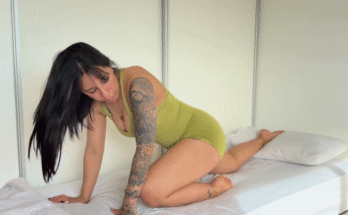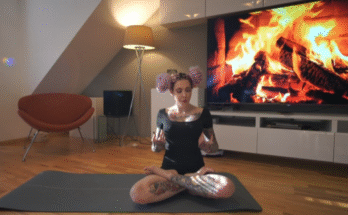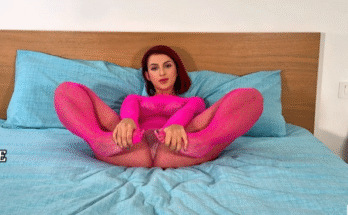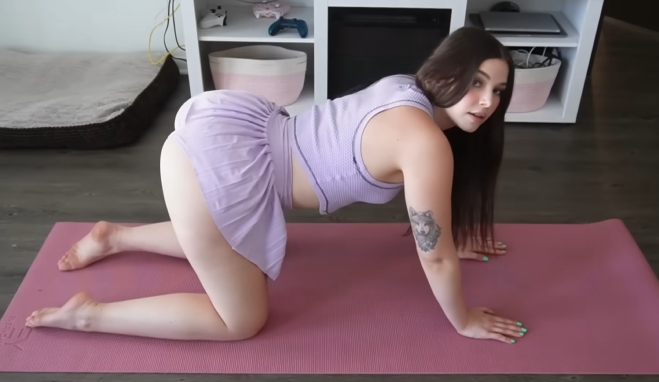
Starting your journey into stretching and gymnastics can feel overwhelming, especially if you’ve never done anything like it before. But the good news is that with the right mindset and a step-by-step approach, anyone can begin improving flexibility, strength, and balance—no matter your age or fitness level. This guide will explore how to ease into stretching and gymnastics, explain the benefits, and provide some beginner-friendly exercises to get you moving confidently.
Why Start Stretching and Gymnastics?
1. Flexibility and Mobility:
Stretching helps lengthen your muscles and improve your range of motion. When combined with basic gymnastics movements, it enhances mobility, reduces stiffness, and prepares your body for more complex activities.
2. Strength and Control:
Gymnastics isn’t just about flexibility—it builds amazing strength. Even basic bodyweight exercises can tone your muscles and improve balance and posture.
3. Injury Prevention:
Tight muscles are more prone to injury. Stretching can help protect your joints, relieve tension, and make everyday activities easier and safer.
4. Mental Health Benefits:
Like yoga, stretching and gymnastics require focus, breathing control, and presence. Practicing regularly can help reduce stress and improve your sense of well-being.
Getting Started: The Mindset for Beginners
If you’re new, the most important thing is to start slow. Don’t compare yourself to gymnasts on social media or try to force flexibility. Progress takes time, and every small improvement is a win.
Keep these tips in mind:
- Be consistent, not extreme. Stretching for 10–15 minutes a day is better than pushing too hard once a week.
- Warm up first. Light cardio like walking, jogging in place, or jumping jacks for 5 minutes will get your blood flowing.
- Breathe deeply. Never hold your breath during stretches. Inhale through your nose and exhale slowly.
- Don’t force it. A stretch should be uncomfortable but never painful. If you feel sharp pain, stop.
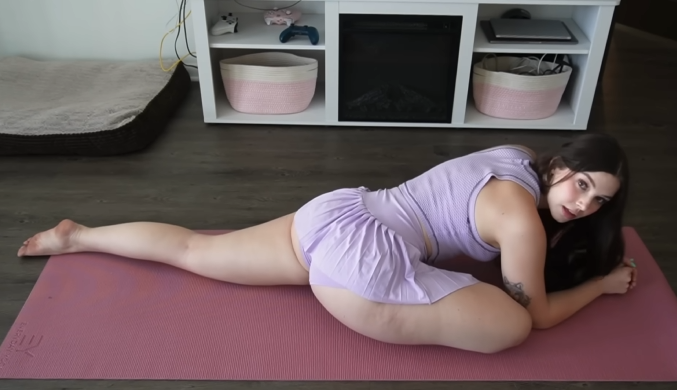
Basic Stretching Routine for Beginners
Start with this simple full-body stretching routine. Hold each position for about 20–30 seconds and repeat if needed. Focus on slow, controlled movements.
1. Neck Rolls
- Slowly rotate your head in a circle.
- 5 times clockwise, then 5 counterclockwise.
- Helps release tension from the neck and upper back.
2. Shoulder Rolls
- Roll your shoulders up, back, and down.
- Repeat 10 times in each direction.
- Improves posture and reduces shoulder tension.
3. Cat-Cow Stretch (Spinal Mobility)
- Get on all fours. Arch your back like a cat, then drop your belly and lift your head.
- Alternate slowly 10 times.
- Great for warming up the spine.
4. Seated Forward Fold
- Sit with legs extended. Reach forward and try to touch your toes.
- Keep your spine long and avoid bouncing.
- Stretches hamstrings and lower back.
5. Butterfly Stretch
- Sit with the soles of your feet touching and knees dropped to the sides.
- Hold your feet and gently press your knees toward the floor.
- Opens hips and inner thighs.
6. Standing Quad Stretch
- Stand on one foot, grab your opposite ankle behind you.
- Gently pull your heel toward your glutes.
- Switch legs.
- Loosens tight quadriceps.
7. Wall Calf Stretch
- Place your hands on a wall. Step one foot back and press the heel into the floor.
- Feel the stretch in your calf.
- Switch sides after 20–30 seconds.
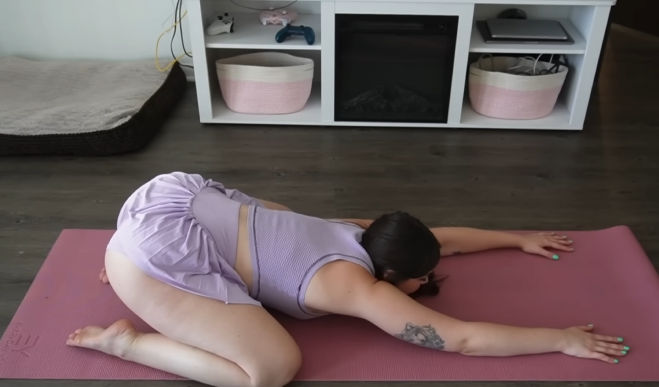
Easy Gymnastics Movements for Beginners
You don’t need to do flips or handstands to get started in gymnastics. Many beginner-friendly movements can be done right at home.
1. Lying Leg Raises
- Lie flat on your back, arms at your sides.
- Lift your legs toward the ceiling, then lower slowly without touching the floor.
- Builds core strength, essential for gymnastics.
2. Superman Hold
- Lie on your stomach with arms extended forward.
- Lift your arms, chest, and legs off the floor and hold.
- Strengthens back muscles and improves body control.
3. Wall Walks
- Start in a push-up position with feet against a wall.
- Slowly walk your feet up the wall while walking your hands toward the wall.
- Only go as far as you feel comfortable.
- This builds shoulder strength and prepares you for handstands.
4. Frog Jumps
- Squat down with feet wide, hands in front.
- Jump forward like a frog.
- A fun way to build leg strength and coordination.
5. Balance Hold
- Stand on one foot and hold for 30 seconds.
- Switch sides. You can extend your arms for balance.
- Improves stability and control.
Weekly Practice Plan (Beginner)
Day 1:
- Warm-up
- Full-body stretch
- Core exercises (leg raises, superman hold)
Day 2:
- Warm-up
- Lower body focus (squats, quad stretch, frog jumps)
Day 3:
- Rest or light yoga
Day 4:
- Warm-up
- Upper body focus (wall walks, shoulder rolls, push-ups)
Day 5:
- Full-body stretch
- Balance training
Day 6:
- Fun practice: combine frog jumps, rolls, or easy cartwheels
Day 7:
- Rest and recovery
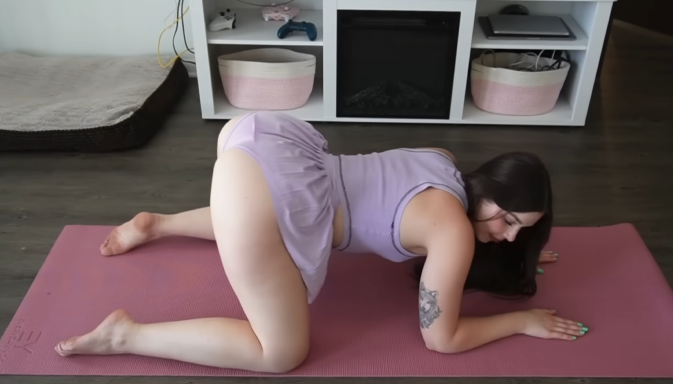
Common Mistakes to Avoid
- Skipping warm-ups: Going into stretches cold can cause muscle strain.
- Comparing to others: Flexibility varies by person. Your journey is unique.
- Holding your breath: This makes stretching less effective and more uncomfortable.
- Overstretching: Pushing too far can lead to injuries.
- Inconsistency: You won’t see results overnight. Daily small efforts add up.
Equipment You Might Need
- Yoga mat: For comfort and support.
- Foam roller: Great for muscle recovery.
- Resistance bands: Help with flexibility and strength building.
- Blocks or cushions: Assist with difficult positions if you’re less flexible.
Motivation to Keep Going
Remember, progress in stretching and gymnastics may feel slow at first, but it’s happening. You’ll notice yourself sitting taller, moving easier, and feeling more confident. Even if you never plan to do advanced moves like splits or handstands, the improvements in posture, balance, and core strength will benefit every part of your life.
Celebrate each small success. Did you reach further today than yesterday? Did your balance improve? That’s winning.
Final Thoughts
Stretching and gymnastics for beginners is not about becoming a professional athlete—it’s about building a strong, flexible, and healthy body while having fun. Start with what you can do, be patient, and enjoy the process. Your body will thank you. And who knows? In a few months, you might surprise yourself with moves you never thought possible.
